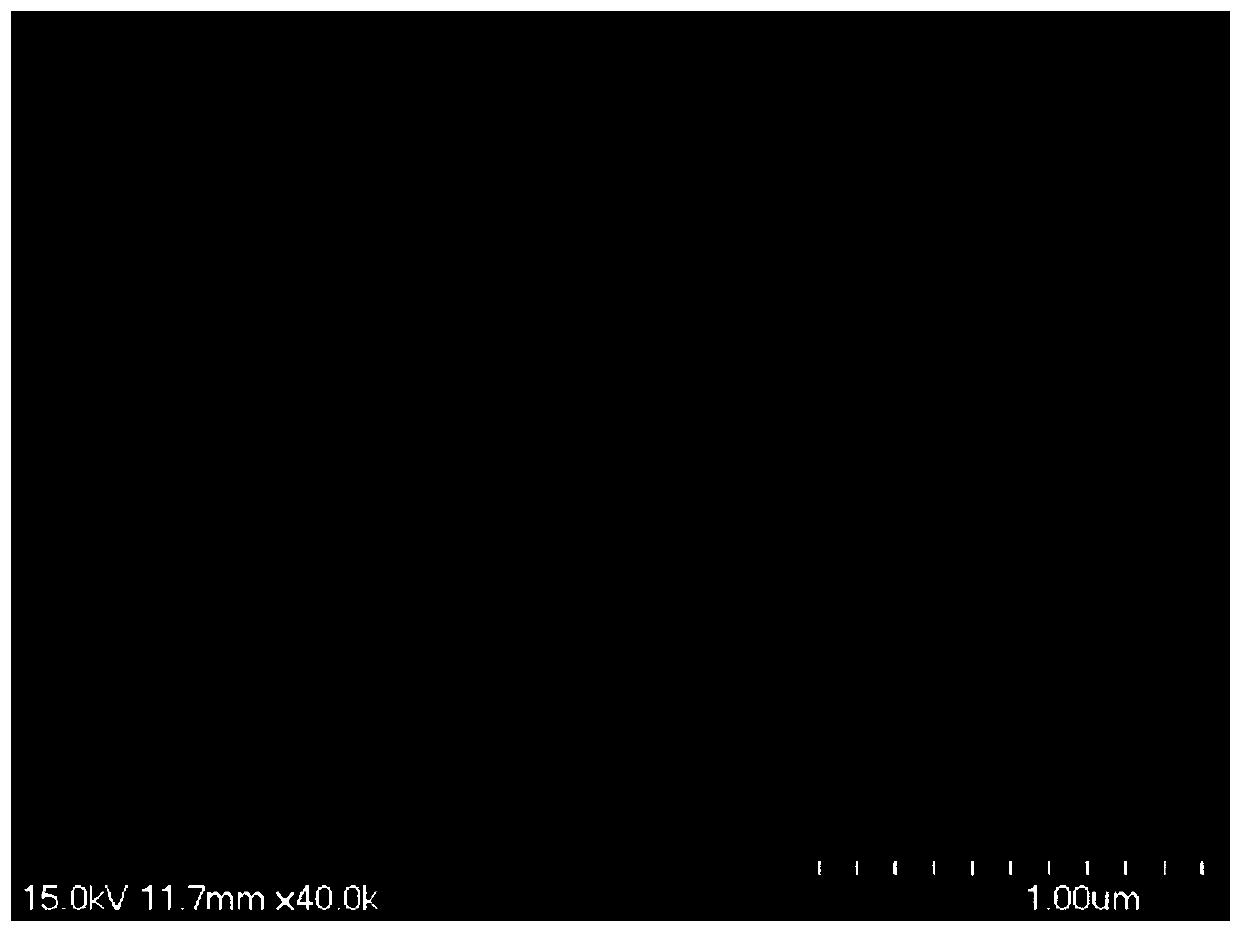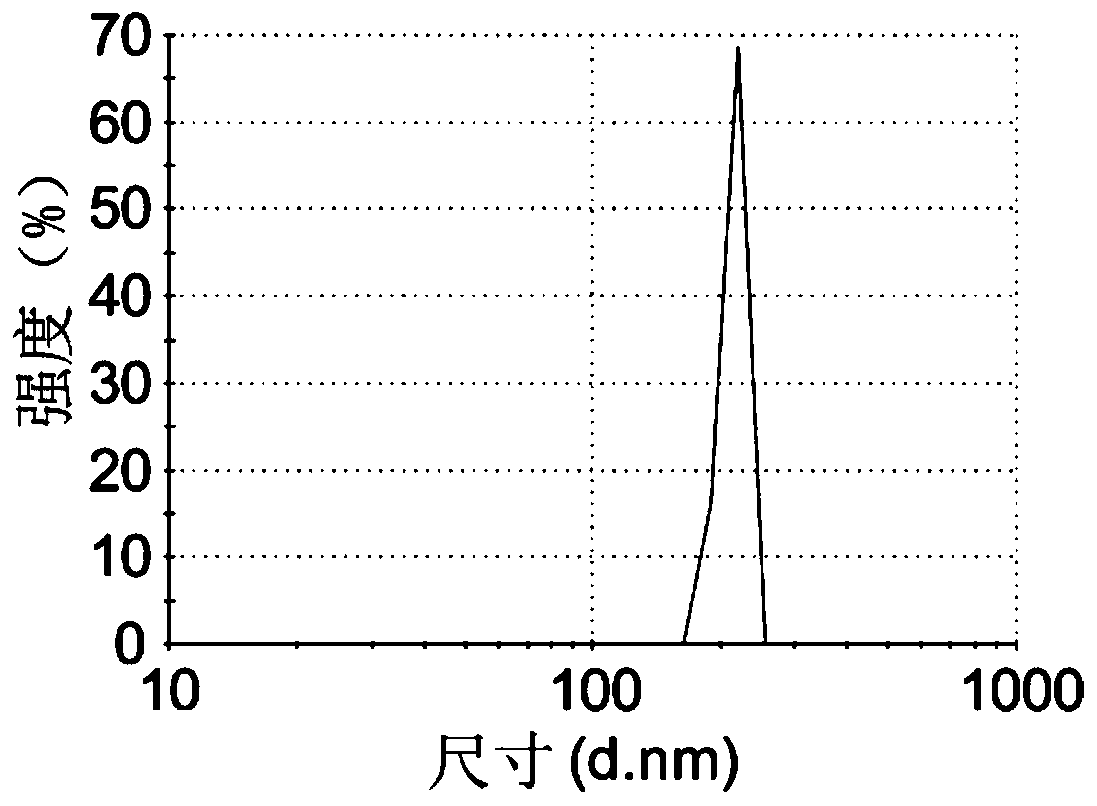Radiation protection nano drug acting on small intestines and preparation method of radiation protection nano drug
A nano-drug and radiation protection technology, which is applied in drug combination, drug delivery, and pharmaceutical formulations, etc., can solve the problems of inability to exert high-efficiency radiation protection effects, and inability to resist the rapid flow of digestive juices, so as to improve time and utilization efficiency and reduce systemic Toxic and side effects, the effect of increasing the effective concentration
- Summary
- Abstract
- Description
- Claims
- Application Information
AI Technical Summary
Problems solved by technology
Method used
Image
Examples
Embodiment 1
[0047] Embodiment 1 Synthetic nano-medicine
[0048] Arginine (0.867g, 4.977mmol) was dissolved in 40mL morpholineethanesulfonic acid solution (25mM, pH 5.0), and then N-hydroxysuccinimide (2.291g, 19.908mmol), 1-(3 -Dimethylaminopropyl)-3-ethylcarbodiimide hydrochloride (3.816g, 19.908mmol) was activated for 2 hours, and then a chitosan solution (1.0g, 4.977mmol) was added to the above mixture, and after stirring at room temperature for 24 hours, sodium hydroxide (0.1M) was added to terminate the reaction. Then thalidomide (1.0mg / mL, 10mL) dissolved in water and acetonitrile mixture (v / v=1 / 1) was slowly dropped into the above polymer solution (10mg / mL, 100mL) and kept stirring The acetonitrile was removed by nitrogen gas overnight, and the supernatant was lyophilized after centrifugation. The lyophilized sample (20.0 mg) was transferred into a dopamine solution (2 mg / mL, 40 mL, pH 8.5), stirred at room temperature for 3 hours, washed with deionized water and centrifuged to ...
Embodiment 2
[0053] Example 2 In vitro radiation protection effect test
[0054] An appropriate amount of nanomedicine (11.237 μg / mL) prepared in Example 1 was dispersed in the small intestinal crypt organoid medium, and the small intestinal crypt organoids of C57BL / 6J mice were cultured in vitro, and 14 Gy dose of X Irradiation, for small intestinal crypts that disintegrate after radiation injury (eg Figure 5 A) and crypts with intact shape and sharp edges (such as Figure 5 B) perform calculations, Figure 5 As shown in C, the survival rate of crypts after irradiation with nanomedicine is about 42.67%, which is significantly higher than that of the control group (*p<0.05). The results show that the nanomedicine has a good radiation protection effect.
Embodiment 3
[0055] Example 3 Intestinal adhesion test
[0056] The radioprotective nanomedicine prepared in Example 1 was labeled with Cy5.5 fluorescent dye, and then resuspended in phosphate buffered saline. After C57BL / 6J mice were fasted for 12 hours, the dye-labeled nanomedicine solution (4mg / mL, 0.5mL) were given to mice in each group by intragastric administration. After the mice were euthanized 6 hours and 24 hours after administration, the small intestine tissue was taken for in vitro fluorescence imaging. The instrument used was a Kodak FX Pro in vivo fluorescence imaging system with an excitation light of 630 nm and an emission light of 700 nm.
[0057] Such as Image 6 As shown, 6 hours after administration ( Image 6 A), the mouse small intestine showed a strong fluorescent signal, indicating that most of the drug had accumulated in the small intestine. 24 hours after administration ( Image 6 B), the fluorescent signal in the mouse small intestine tissue still maintains ...
PUM
| Property | Measurement | Unit |
|---|---|---|
| concentration | aaaaa | aaaaa |
| particle diameter | aaaaa | aaaaa |
| particle size | aaaaa | aaaaa |
Abstract
Description
Claims
Application Information
 Login to View More
Login to View More - R&D
- Intellectual Property
- Life Sciences
- Materials
- Tech Scout
- Unparalleled Data Quality
- Higher Quality Content
- 60% Fewer Hallucinations
Browse by: Latest US Patents, China's latest patents, Technical Efficacy Thesaurus, Application Domain, Technology Topic, Popular Technical Reports.
© 2025 PatSnap. All rights reserved.Legal|Privacy policy|Modern Slavery Act Transparency Statement|Sitemap|About US| Contact US: help@patsnap.com



